- Home
- Charles de Lint
From a Whisper to a Scream Page 2
From a Whisper to a Scream Read online
Page 2
He stood and watched until the men were finished with their work; then he finally turned away. Lieutenant Brewer was leaning against Thomas’s car, smoking a cigarette, when Thomas left the graveyard and stepped out onto the street. He lifted his eyebrows at Thomas’s approach.
“I had to see them put him in the ground,” he explained.
Brewer nodded. “I know the feeling.”
Neither man spoke for a time. Thomas looked skyward. At night, the stars didn’t seem close anymore. They seemed, instead, to be the eyes of Teddy Bird’s victims, the ones whose bodies hadn’t been found; they seemed to be the eyes of all victims who, for one reason or another, would never know peace.
It was still midafternoon, though. Thomas wouldn’t see those eyes for hours; maybe he wouldn’t see them at all if the present cloud cover continued. But he didn’t need to see them to know that they were there.
Walking a beat didn’t satisfy him any longer. A cop on the street did what he could, but all too often he got there too late to do any good. The detectives at least had the opportunity to track the bastards down.
Thomas had the opportunity of making first-grade detective coming up, but he knew it was a long shot. Racism wasn’t a part of official department policy, but Newford had never had a Native American working plainclothes, and from comments he’d overheard from time to time over the years, Thomas knew there were many who wanted to make sure the department never would. No matter how well Thomas did in his upcoming exam, he needed somebody up there with the brass pulling for him. He needed a rabbi to look out for him if he wanted to get anywhere.
Brewer’s presence here gave him hope.
“I went over your record,” Brewer said, finally getting to the point of why he was here, “and I liked what I saw. I could use a man like you in my squad.”
He took a last drag from his cigarette. A car went by, and both men followed it with their eyes until it turned the far corner.
“Interested?” Brewer asked without turning.
“What do you think?” Thomas asked.
Brewer shook another cigarette free from the crumpled pack he carried in his suit coat and lit it from the butt of the one he’d been smoking. He flicked the butt away, watching it arc and fall to hit the pavement with a flare of sparks. Only then did he look back at Thomas.
“You’ve got a rep for being a loner,” he said.
“I can be a team player.”
Brewer smiled. “I’ll put the word in, then. Might take a little time.” He took a drag on his cigarette, thinking. “There’s an opening for Detective First Grade at the 12th. Put in some street time there and I’ll work on getting you transferred to Homicide in a couple of years. If that’s what you want.”
Like he had to ask, Thomas thought.
“Whatever you can do,” he said. “I appreciate the help.”
Brewer gave Thomas a friendly bump on the shoulder with his closed fist.
“Better ace that detective’s exam,” he added as he walked away.
For the first time since that day he’d shot Bird, the tightness eased in Thomas’s chest. He got into his car and drove home, where he spent the rest of his day off studying.
TWO
AUGUST 1990
The first time he saw her was through the viewfinder of his Canon F-1. The 300mm telephoto lens brought her face up so close he felt he could just reach out and touch her. She had pale, pale skin, jetblack hair that stood up in short gelled spikes and too much makeup. Her eyes were like dark bruises, her lips a glossy red.
The makeup made her look older, but she was really just a kid, he realized, somewhere in that muddy range between seventeen and her early twenties. Her jeans were a fading black, torn at one knee and tight. She wore a white T-shirt tucked into them and scuffed Doc Martens on her feet, and she held a jean jacket tightly against her chest.
She stood under a streetlight across from him, part of the crowd held back by the police barricades. The curtain of light that dropped down from the streetlight kissed her like a spotlight, accentuating her stark black-and-white tones. The only relief was the bright red of her lips.
He shot five frames of her, just out of habit, not even thinking about what he was doing. The Canon’s motor drive whirred, its shutter taking its time at the slow speed needed for night shooting. Removing his finger’s pressure from the shutter release, he raised the angle of his camera so that he could focus on the graffiti high on the wall behind the girl. It was what he’d started to shoot before he spotted her. He gave the focusing ring a small clockwise turn. As the graffiti came into focus, he had a moment’s déjà vu.
The wall was gray cement. Spray-painted on it was the dyslexic scrawl of a name—NIKI, the N turned backward, the paint black. The only splash of color on the wall was a pair of bright red lips, outlined with more black.
He shot another couple of frames, then lowered the angle of his camera again, panning back and forth across the crowd, looking for the girl. He couldn’t find her. He straightened up and lifted his eye from the viewfinder. Closing up his tripod, he let his camera lean against him as he scanned the crowd with his naked eye.
Nothing. She was gone.
His gaze returned to the graffiti above the crowd. He’d spotted the name and those same lips in a half-dozen places over the past few weeks: on a bridge support where Highway 14 cut under the Expressway; on the sides of two buildings—one in Lower Crowsea, the other in the Tombs; three times in other parts of the Zone. And now here.
NIKI, with the dyslexic N. And the lips—not quite smiling, but not sad or pouting or any expression he could put a word to. Their expression was enigmatic, like some graffiti artist’s shorthand reproduction of the Mona Lisa’s smile—it said everything with just a few quick lines and a splash of color.
The girl in the crowd, he thought. Her lips carried a similar expression. Hers was a younger version, not so mature as the hidden knowledge that Da Vinci’s model seemed to hint at, but the enigma was there. Remembering the girl as he’d seen her through the viewfinder, the expression haunted him.
“You about through, McGann?”
He turned to find Peter Kennedy standing beside him. They were coworkers at The Newford Star, photographer and reporter, but they didn’t much get along. No one got along with Kennedy—not that Kennedy ever noticed. He lived in a dreamworld in which he was a star reporter who’d be joining a television news team just about any day now. He’d been saying that for about as long as he’d worked at The Star, which would be three years come the spring.
Kennedy did have a TV anchor’s good looks: immaculate hair, broad shoulders helped by the heavy padding in his sports jackets, and strong, handsome features marred only by closely set eyes that were constantly shifting their gaze. The eyes went with his manner, which alternated between brown-nosing and abrasiveness, depending on what he wanted and whom he wanted it from.
Weasel eyes was how Jim’s friend Meg described them.
They were focused on him now, waiting for his reply.
“Yeah,” Jim said. “I’ve got all the shots I need.”
Kennedy put out his hand. “I’ll drop off the film for you.”
Jim ignored the hand. “I do my own developing.”
“Well, just make sure that you get them in on time to make the morning—”
“You my editor now?”
Kennedy shook his head, obviously puzzled.
“Why don’t we let Grant worry about when I turn my work in?”
Ben Grant was The Star’s chief photographer and Jim’s immediate supervisor.
Kennedy began one of his patented sputtering protests, but Jim moved away from him and closer to the police barricades. He could sense Kennedy hesitate, deciding whether to follow him or not, but, happily for Jim, he headed off for his car. The tension left Jim’s shoulders then and he opened up his tripod again. Whenever he was around Kennedy, he just felt like hitting the man.
He finished off the roll, concentrating on
some of the chief investigators on the scene, but saved the last frame for a final shot of the green body bag that was about to be loaded into the ambulance.
Hell of a thing, he thought.
Tonight’s victim was the fourth teenage hooker to die in as many weeks, although the rumor mill already had it that this time around the victim was some rich kid from the Beaches, slumming in the Combat Zone’s less than reputable nightclubs. Maybe the Friday Slasher was moving up the social scale, but Jim doubted it.
The police weren’t giving out any information at this point, but that just lent the rumors more credence. With the other victims, the police had already made a statement, beyond “No comment,” by this point in the proceedings.
Attendants lifted the stretcher and took it into the back of the ambulance. Jim shot his final frame. As he rewound his film and reached for a new roll, he was joined by one of the other photographers on the scene.
Meg Mullally was a freelancer. She was slim and attractive, with a long mane of deep red hair that would put a shampoo model’s exaggerated tresses to shame. Most editors, upon first meeting her, thought she should be on the other side of the camera—until they saw her work.
Jim decided that she’d come straight to the crime scene from an evening of relaxing at home. She was wearing an old pair of jeans and a flannel shirt with its tails hanging out, and her face was free of makeup. Not that she needed it. Half the newsmen in the city had chased after her at one time or another, but she and Jim hadn’t had to go through the parry and thrust of the dating game, because Jim had been in the middle of a longtime relationship when they first met. They had a friendship that was proving to be a lasting one—which was more than could be said for the relationship Jim had been in.
“Get any good shots?” Meg asked.
Jim nodded. “I liked your cover for Time. Nice work.”
“Nice?”
The photo they’d used was one she’d taken a few months ago during a standoff between police and an armed man outside a Grasso Street nightclub that specialized in country-and-western music. The man had been holding a gun to his own head. The way he was standing, he’d blocked off the last two letters of the word “COUNTRY” that ran lengthwise beside the club’s entrance.
It was a powerful image, and Time had run it to go with a special report on crime in the streets that took up the better part of the issue.
“Okay,” Jim said. “It was great. Outstanding. Should I go on?”
“Mmmm …”
“Stunning.”
Meg grinned. “That about sums it up.”
All Jim could do was shake his head.
“How’d you ever get to be so modest?” he asked.
“It came free with my talent. Are you going back to the paper to soup your film?” she added.
“It’d break Kennedy’s heart if he didn’t have a photo to run with his golden prose,” Jim said.
“Sounds like a good reason to lose the film.”
Jim laughed.
“Well, I’ll be up developing my own shots for a while tonight. Drop by for a drink on your way home if you’re up for it.”
“Maybe I will. You want a lift?”
“Love one. I took a cab because I couldn’t find my car keys.”
Jim didn’t have to ask about a house key. Meg was so apt to lose things like keys that she always kept a key to her apartment on a chain around her neck.
She had her Nikon out with her tonight, and it was still attached to its tripod. Shouldering it, she fell into step beside him as they headed back through the crowds, to where he’d parked the car that the paper provided him with as one of the necessary perks of his job.
This late at night, Jim had the paper’s developing lab pretty much to himself. The only other person he ran into was Phil Castleman, who’d come in to develop a roll he’d shot at an accident up where the Expressway crossed Yoors Street. A tractor trailer had turned over, resulting in a seven-car pileup.
Jim shared a coffee with Phil while he waited for his negatives to dry, then went into one of the darkroom cubicles to print up a contact sheet. Once the contact sheet was dry, he circled a couple of likely frames with a red grease pencil. Then he printed up black-and-white 8×10s of the shots he’d chosen, which he’d leave along with the contact sheet on Grant’s desk when he left. After that he made color prints of the photos he’d taken for himsetf—some graffiti he’d shot earlier in the evening, the graffiti at the crime scene, and the five frames he’d taken of the girl in the crowd. It was close on two-thirty by the time he signed out of the building and got into his car.
He thought about just going home and hitting the sack, but he wasn’t really tired and tomorrow was Saturday. Since he didn’t have anything to get up early for anyway, he pointed the car in the direction of Meg’s Crowsea apartment on Lee Street. She’d rigged up a little red light by the door of her apartment that shone when she was working in her darkroom. The light was on as Jim came down the hall, but flickered off just as he reached the door. He leaned on the bell.
The door opened to the length of the security chain, and Meg looked out at him. She had her hair tied back in a loose ponytail now, but that was the only change since he’d seen her earlier on in the evening. She still looked pleasantly scruffy. Giving him a smile, she closed the door so that she could take off the chain.
“Come on in,” she said when she had the door open.
She headed off down the short hall that ran straight through the apartment to the kitchen in back, leaving him to close the door. He trailed after her and pulled up a chair at the kitchen table. There were 8×10 black-and-whites scattered all over it. He turned them around so that he could look at them, but they weren’t much different from the ones he’d taken at the crime scene himself.
“Nothing great,” Meg said, looking over his shoulder. “Do you want coffee or something stronger?”
“How about something stronger in my coffee?”
“Coming up.”
Jim had been the first photographer to reach the crime scene, arriving before the detectives. The area hadn’t even been roped off yet. The only officials present were the two patrolmen who’d found the body. He’d managed to get a few shots of the body itself—no face shots, but the paper couldn’t use those anyway—but then the full weight of the Newford Police Department descended on the scene. He’d tried to remain unobtrusive, but one of the patrolmen had ushered him to the far side of the barricades all the same.
“I’ve got a couple there I can sell,” Meg said. She moved across the kitchen to put the kettle on. “How’d you do?”
“I was the first one there.”
Meg returned to the table and sat across from him.
“Let me guess,” she said. “You were out shooting graffiti again—right?”
Jim nodded. “I got some interesting stuff tonight. Did you notice …”
His voice trailed off. He’d been leaning back in his chair, looking at the corkboard hanging above the table, where Meg pinned an ongoing and ever-changing collage of her work. He sat up straight in his chair and leaned over, his finger jabbing one of the prints.
“Can I take it down?”
“Sure. What is it?”
“I’m not sure … .”
But once he had the photograph in his hand, uncertainty fled. The photo showed a part of the crowd that had gathered at one of the other Friday Slasher crime scenes. Standing in its midst, just her head and shoulders visible, was the girl he’d photographed earlier this evening.
“When did you take this?” Jim asked.
“That’s from last Friday.”
“Do you have any prints that you shot on the other Fridays? I’m thinking of crowd scenes.”
Meg nodded. “Sure. But what are you looking for?”
Jim pulled his knapsack up from the floor and dug out the folder that held the photographs he’d printed up at The Star’s lab. He took out one of the ones of the girl and laid it on the table beside Meg’s
crowd shot.
“She was there both weeks,” he said.
Meg studied his photos, then hers. “Little young for you, isn’t she?”
“Ha, ha.” He picked up a photo of the graffiti on the wall behind the girl and laid it on the table. “I didn’t see her that week, but this graffiti was there—about a block down.”
Meg frowned, thinking. “A block down … ?”
Jim nodded.
“But tonight’s killing was—”
“Three blocks north. This graffiti’s been showing up in various places all over town.”
“I still don’t get it.”
“Look at it—look at her. Don’t you see the connection?”
Meg shook her head.
“Look at the graffiti,” he repeated. “The wall’s all in black and white, mirroring her clothes and hair.”
“No way that wall’s white,” Meg said.
“You know what I mean.”
Meg shook her head. “But do go on.”
“Okay, the girl and the wall, no color. But then the lips—hers and the ones in the graffiti—are both a bright slash of color. There’s some kind of connection between the two.”
Meg studied the two pictures for a long moment. Finally she shook her head.
“I think you’re stretching it,” she said.
Jim remembered the strong sense of déjà vu he’d felt at the crime scene as he’d turned his viewfinder from the girl to the wall. But what made sense then—instinctive sense, if not logical—didn’t seem quite so clear-cut now.
“Maybe,” he said.
Meg rose to her feet.
“Let me get the other photos,” she said.
She was a few minutes digging them out of her files. When she brought them back, they both went over them. Jim used a magnifying glass on her contact sheets, to study the frames that she hadn’t printed up. Meg brewed the coffee. By the time it was ready and she’d added a shot of whiskey to each mug, Jim had finished.

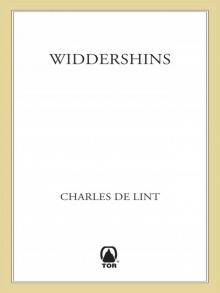 Widdershins
Widdershins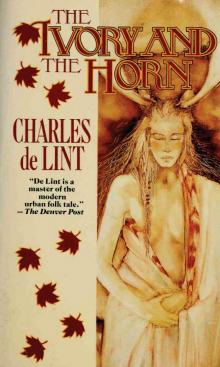 The Ivory and the Horn
The Ivory and the Horn Yarrow
Yarrow The Blue Girl
The Blue Girl Spirits in the Wires
Spirits in the Wires The Painted Boy
The Painted Boy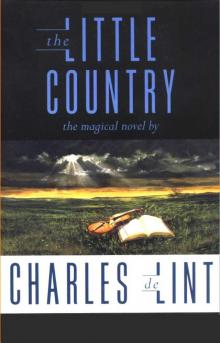 The Little Country
The Little Country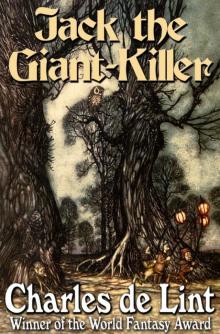 Jack of Kinrowan: Jack the Giant-Killer / Drink Down the Moon
Jack of Kinrowan: Jack the Giant-Killer / Drink Down the Moon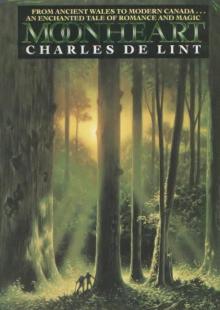 Moonheart
Moonheart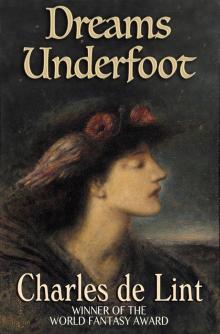 Dreams Underfoot
Dreams Underfoot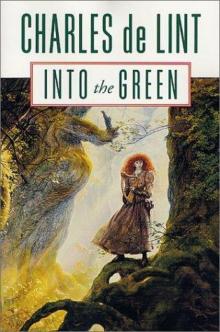 Into the Green
Into the Green Trader
Trader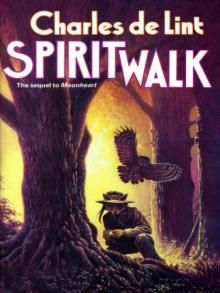 Spiritwalk
Spiritwalk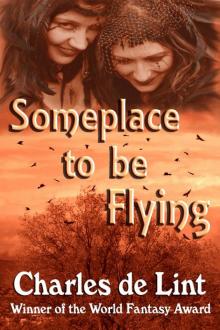 Someplace to Be Flying
Someplace to Be Flying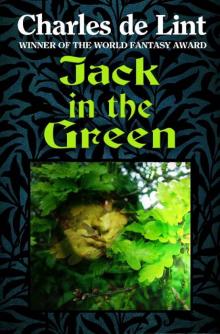 Jack in the Green
Jack in the Green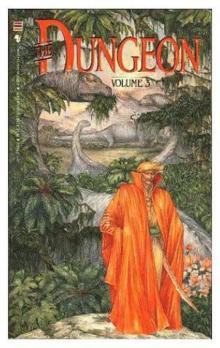 The Valley of Thunder
The Valley of Thunder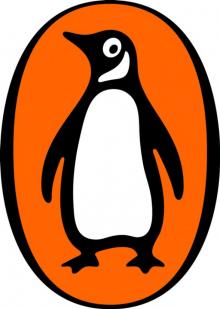 Out of This World
Out of This World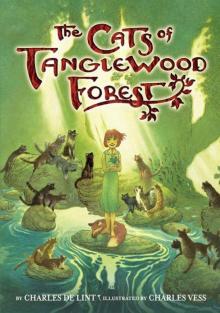 The Cats of Tanglewood Forest
The Cats of Tanglewood Forest Seven Wild Sisters
Seven Wild Sisters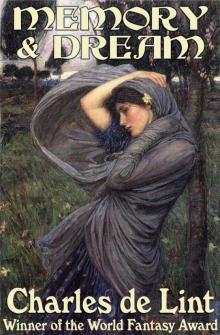 Memory and Dream
Memory and Dream The Very Best of Charles De Lint
The Very Best of Charles De Lint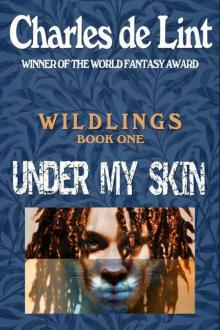 Under My Skin
Under My Skin Forests of the Heart
Forests of the Heart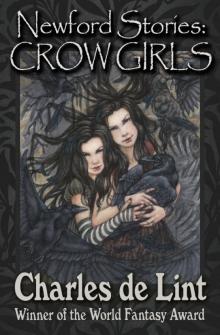 The Newford Stories
The Newford Stories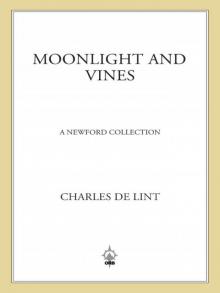 Moonlight and Vines
Moonlight and Vines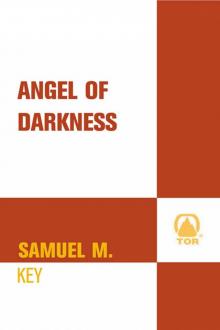 Angel of Darkness
Angel of Darkness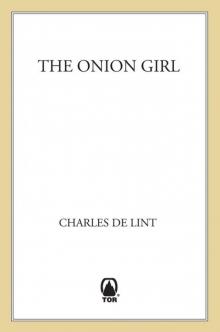 The Onion Girl
The Onion Girl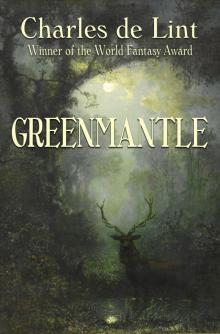 Greenmantle
Greenmantle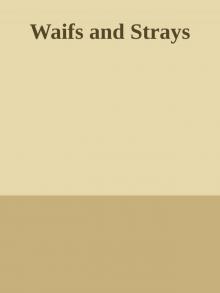 Waifs And Strays
Waifs And Strays From a Whisper to a Scream
From a Whisper to a Scream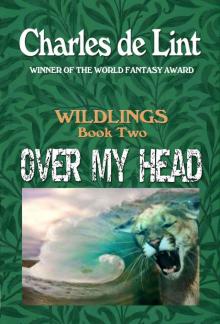 Over My Head
Over My Head The Ivory and the Horn n-6
The Ivory and the Horn n-6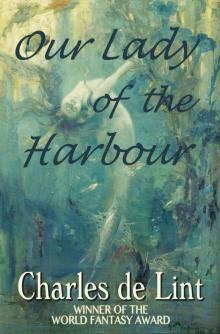 Our Lady of the Harbour
Our Lady of the Harbour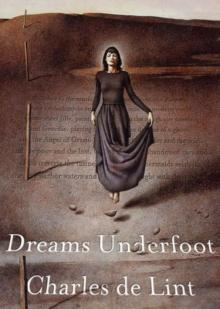 Dreams Underfoot n-1
Dreams Underfoot n-1 Jack the Giant-Killer (Jack of Kinrowan Book 1)
Jack the Giant-Killer (Jack of Kinrowan Book 1)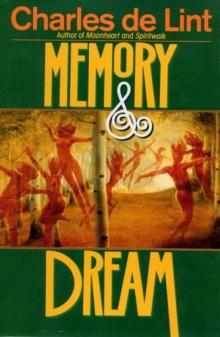 Memory and Dream n-5
Memory and Dream n-5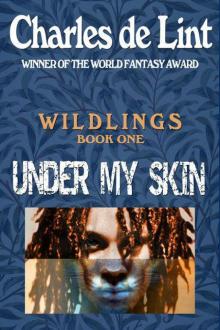 Under My Skin (Wildlings)
Under My Skin (Wildlings) Newford Stories
Newford Stories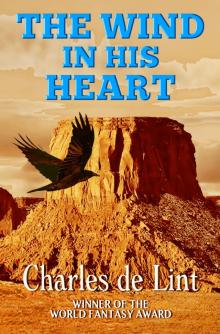 The Wind in His Heart
The Wind in His Heart Ivory and the Horn
Ivory and the Horn